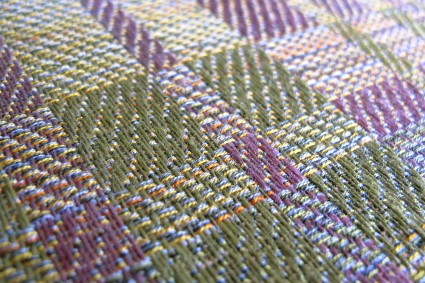Sashiko - a now extinct Japanese textile technique and tradition which for centuries was used to adorn as much as make garments more durable. A portrait.
The developments in the British Midlands of the industrial revolution have coined the textiles industry possibly like no other.
It was is this area that we find the roots to the modern textile industry, including case studies that (nearly) could be dated from our modern times. From archives and historical records the industrial revolution left behind in the area, we can gain many an insight that will trigger a simple ‘déjà-vu’ when taking note of news about textile factories from the Far East that with regularity hit our headlines.
Laces have been a firm part of haute-couture since the medieval, and the fabric still is, and always has been, a luxury product. The StGall exhibition in Switzerland pays tribute to 800 years of lace work featuring the best of European textile artisanry and technology.
Resting the case for innovation.
“Globalization presumes sustained economic growth. Otherwise, the process loses its economic benefits and political support.” (P. Samuelson). There is an evident illogic, impossibility, of the traditional 'economic growth' lemma.
Drakes is synonymous around the world with the most beautiful silk ties that money can buy. Founded thirty years ago on a top floor in Old Bond St and operating from a former Royal Mail depot in Old St for the past twenty, Drakes brought manufacturing back to the East End. A portrait.
The word Beshtar means 'More' in Dari. The idea behind the brand and its designs is to do more for the people of Afghanistan. The inspiration for Beshtar comes from the resilience of a people living in a country that has been at war for more than 30 years.
The Spitalfields taylors Alexander Boyd is London's last shirt maker. All their shirts are made at the Rayner and Sturges factory in Kent. Impressions from the factory, and the 'making of' a bespoke Savile Row shirt.
When looking underneath the surface of the Japanese fashion industry, a fundamental shift is taking place: Production is shifted back to the Japanese home land.
When looking underneath the surface of the Japanese fashion industry, a fundamental shift is taking place: Production is shifted back to the Japanese home land.
“The raison d'être of Lilou is my desire to connect people with 'their' colour.
I wanted to take the opportunity and expose people to their colour, the ones that make them feel relaxed, energized, happy, motivated..." says Ingrid Vercruyssen, the textile designer behind Lilou.
Julius Walters of Stephen Walters & Sons is a ninth generation weaver of a family business founded 1720. This is the company that wove the silk for the Queen’s coronation robes and for Princess Diana’s wedding dress.
Everyone seems to join in for the treasure hunt called Christmas shopping. Are the 'ethical' Christmas fairs worth it? Only for discoveries - such as these 3 tiny brands.
On March 3rd, 2011, ethical fashion was discussed in a Question session of the UK's House of Lords. Much focus was on human rights & the environment. But fashion is driven by SMEs ...
"Made in [your country]" is an ongoing attractive topic in the contemporary sustainable fashion discussion. In many cases, one that borders - or is even right in the middle of - some rather right-wing nationalist sentiments. Europe as a whole does not need that - there is enough quality design and craftsmanship to be proud of without getting into shallow waters.
The British textile industry, chances are, never would have reached its former pre-offshoring movement glory if it was not for immigrants. In fact, if it had not been for the Huguenot influence on silk weaving – and by means of cross-fertilisation, cotton and wool – the industry would have served a pure domestic purpose for the 18th, 19th and first half of the 20th century.
J&R Designs in Homerton is a small factory in London's East End, the only remaining of its kind, run by the Persaud family, and which specialises in hand crafted quality leather handbags manufacturing. A portrait.
Contrary to common opinion, ‘Australian-made’ does not always mean ethically made. In some cases salaries as low as AUS$ 4 are paid. Ethical Clothing Australia is campaigning to change their domestic fashion industry from within.
The European wool industry has all but disappeared. Recently however, a grassroots trend is emerging. Mini mills now cater to small hold breeders, which turns wool source more transparent then ever.
With the fashion city Milan winning the honour to be the city for the 2015 World Exhibition, the Città de la Moda was part of the Expo plans. But - there will be some changes ...
With Sao Paulo Fashion Week just closed I am here to write (again) about Brazilian fashion.
This time it is about an interesting project I got to know of personally, Projeto Contem, a private and independent initiative.
Projeto Contem is both a brand and a network of entrepreneurs working in textile and fashion as well as in food, beauty, design, arts, music and cinema.


